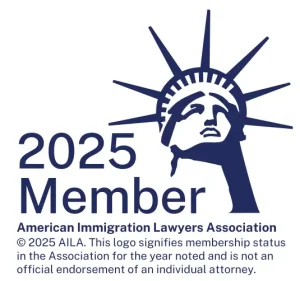P-3 Visa Montana North Dakota Wyoming: A Complete Guide to Culturally Unique Programs
Are you an artist or entertainer who is part of a culturally unique program? Perhaps your program is located in Montana, North Dakota, or Wyoming? If so, we can help you navigate the P-3 visa process successfully.
Recent high-profile cases, like the deportation of Czech clarinetist Jaroslav Skuta, demonstrate why proper visa selection is crucial for international performers. Understanding the difference between amateur and professional status—and choosing the right visa category—can mean the difference between a successful cultural exchange and deportation.
Why Not a B Visa? The Professional vs Amateur Distinction
Many cultural organizations mistakenly believe they can invite international performers on tourist (B-2) or business (B-1) visas. However, these visas have strict limitations:
- B-2 Tourist Visas: Only for true amateurs who normally perform without compensation and are not members of the entertainment profession
- B-1 Business Visas: Extremely limited exceptions (recording for outside-US distribution only, government cultural programs with non-paying audiences)
- The Critical Rule: Anyone who normally earns income from performing requires a work visa, regardless of whether the U.S. performance is paid or unpaid
The P-3 visa fills this crucial gap, allowing professional performers to participate in cultural exchange programs legally and safely.
What is a P-3 Visa and Why Do You Need One?
The P-3 visa falls under USCIS’s category of visas for athletes and performers in the P visa family. It’s unique because individuals or groups use it to come to the United States to participate in culturally unique programs that help audiences understand traditional or ethnic art forms.
What Makes a Program “Culturally Unique”?
The USCIS defines culturally unique programs as those that represent the traditions or culture of a specific country, ethnic group, religion, tribe, or other distinct cultural group. Importantly, the Administrative Appeals Office ruled in Matter of Skirball Cultural Center (2012) that art forms need not be “traditional” to qualify—fusion art forms combining different cultural traditions can also meet the “culturally unique” standard.
Examples of qualifying programs include:
- Traditional folk music from specific regions
- Indigenous dance and ceremonial performances
- Fusion art forms (such as Argentine-Jewish klezmer music)
- Cultural festivals celebrating specific ethnic heritage
- Educational workshops on traditional crafts or musical techniques
Real-World Example from Our Practice
Consider a festival dedicated to teaching children violin, where organizers want to bring a violin teacher who specializes in Gaelic music. This scenario perfectly illustrates the P-3 visa application. As part of the process, you would demonstrate to USCIS that your festival constitutes a cultural event, and you would show that your performer teaches a unique or traditionally ethnic type of music that furthers cultural understanding.
P-3 vs Other Performance Visas: Choosing the Right Path
Understanding when P-3 is the appropriate choice requires knowing your alternatives:
P-1: Internationally Recognized Performers
- P-1A: Individual athletes competing at internationally recognized levels
- P-1B: Entertainment groups established for at least one year with international recognition
P-2: Reciprocal Exchange Programs
- P-2: Artists performing under formal reciprocal exchange programs between U.S. and foreign organizations
- Examples: American Federation of Musicians exchanges with Canadian counterparts
P-3: Culturally Unique Programs
- Most accessible for community cultural exchange
- Does not require international fame or formal exchange agreements
- Focuses on cultural authenticity and educational value
- Can be commercial or non-commercial in nature
O-1B: Extraordinary Ability
- O-1B: Individual artists with extraordinary ability (higher standard than P-3)
- Requires sustained national or international acclaim
P-3 is often the most practical choice for community-level cultural exchange because it doesn’t require international fame or formal exchange agreements, making it ideal for bringing authentic cultural performers to local communities.
Why P-3 Works Particularly Well for Rural States
Montana, North Dakota, and Wyoming have unique advantages for P-3 visa applications:
- Clear Cultural Exchange Value: Bringing international performers to predominantly rural communities clearly demonstrates cultural exchange and education
- Community Impact: Smaller communities can more easily document the cultural and educational significance of international performances
- Educational Partnerships: Universities and colleges in rural states often support these applications with academic credibility
- Authentic Cultural Need: Rural venues strengthen P-3 applications by emphasizing the genuine cultural exchange occurring when diverse performers share their heritage
In rural America, inviting performers from Africa, Asia, Latin America, or other regions inherently involves cultural exchange that benefits both the performers and local communities.
P-3 Visa Application Process and Requirements
The petition process requires careful preparation and documentation. Your U.S. employer, agent, or sponsoring organization must file Form I-129, Petition for a Nonimmigrant Worker, with supporting evidence.
Required Documentation
- Contract or Agreement: Written contract between yourself and the person coming to perform, or summary of oral agreement terms
- Event Explanation and Itinerary: Detailed explanation of the cultural program and complete itinerary with dates and locations
- Cultural Authenticity Evidence: Critical documentation proving through affidavits, expert testimonials, or published materials the authenticity of your performer in presenting or teaching the unique and traditional art form
- Labor Organization Consultation: Perhaps the most challenging requirement—obtaining written consultation from an appropriate labor organization (such as the American Federation of Musicians for musicians)
Recent Legal Developments
- Premium Processing: Now available for P visa petitions ($2,500 for 15-day processing guarantee)
- Fusion Art Forms: Matter of Skirball Cultural Center confirms non-traditional cultural fusion qualifies as “culturally unique”
- Documentation Standards: USCIS increasingly values expert testimonials and published materials demonstrating cultural authenticity
Critical Timing Considerations
Start the P-3 process at least 6 months before your planned event:
- Labor Consultation: 2-4 weeks (American Federation of Musicians for most musicians)
- USCIS Petition Processing: 2-6 months (expedited processing available for additional fee)
- Consular Processing: 2-6 weeks after petition approval
- Travel Planning Buffer: Additional time recommended for unexpected delays
Important timing note: Entertainment labor unions can be particularly slow during busy seasons (summer festival preparation), so early planning is essential. The consultation requirement cannot be waived, and delays in this step often derail entire cultural programs.
P-3 Visa Duration and Extensions
USCIS authorizes up to one year in P-3 status initially. If your cultural program lasts longer than one year, you can extend the visa for an additional year to complete the same event or activity.
Family and Support Personnel:
- Family members may join the lead performer as dependents on P-4 status
- Essential support personnel are eligible for P-3 classification if they perform services that cannot be readily performed by U.S. workers
Common Mistakes to Avoid
Based on our experience with P-3 applications, avoid these frequent pitfalls:
- Using B visas for professional performers: Even unpaid performances by professionals require work visas
- Inadequate cultural documentation: Failing to clearly establish the cultural uniqueness of the program
- Late labor consultation requests: Unions need adequate time to review and respond
- Insufficient itinerary details: USCIS requires specific dates, locations, and event descriptions
- Weak evidence of cultural exchange: Document how the program furthers understanding of the art form
How We Can Help
We have extensive experience with P-3 visas and understand what it takes to get applications approved by USCIS. If you are organizing culturally distinct performances or culturally unique programs in Montana, North Dakota, or Wyoming, we can guide you through the complex requirements.
Our approach includes:
- Early consultation to determine visa eligibility and strategy
- Documentation guidance to build the strongest possible case
- Labor organization coordination to expedite consultation requirements
- USCIS petition preparation with comprehensive supporting evidence
- Timeline management to ensure your cultural program proceeds as planned
For a real-world example of why proper visa selection matters for international performers, see our detailed analysis of common musician visa violations and how to avoid them.
Ready to bring international performers to your community? Contact us early in your planning process, or schedule a consultation to discuss your specific cultural program needs.
This article is part of our comprehensive guide to U.S. visa types. For related information, see our guides to O-1 visas for extraordinary ability artists and general requirements for performance visas.

